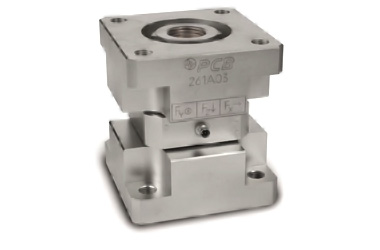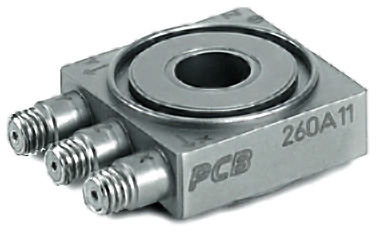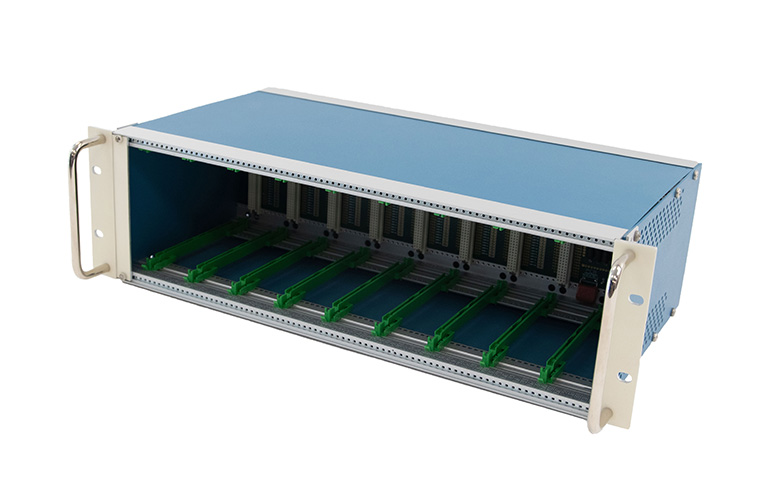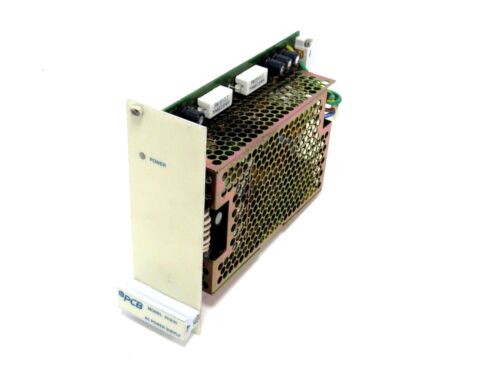Main Menu
- Home
- Product Finder
- Calibration Systems
- Calibration Services
- Digital Sensing
- Industrial Vibration Calibration
- Modal and Vibration Testing
- Non-Destructive Testing
- Sound & Vibration Rental Program
- Learn
- About Us
- Contact Us
Vibration overtesting occurs when an object under test is subjected to unrealistically severe and potentially damaging forces at the resonances of that object. Due to the high cost, long development times, and uniqueness of sophisticated aerospace and other high-tech equipment, it is important to implement techniques that prevent vibration overtesting and ensure the safety of such items during vibration qualification testing.
PCB's Force Limited Testing Systems provide the sensors that drive a closed loop control system to an existing shaker or slip table so that at frequencies where the measured force exceeds a safe limit, the controller’s output signal (input signal to the shaker) is “notched” by reducing output amplitude. Thus, reaction force between the test fixture and structure is maintained within specified limits, keeping the force experienced by the object under test within realistic and safe levels.
See the Environmental Test Brochure for detailed information on force limited vibration testing systems or the Force Sensors FAQ.
PCB Force Limited Vibration System Benefits:
260 Series force ring sensors simultaneously measure dynamic force in three orthogonal directions (X, Y, and Z) and must be statically preloaded for optimum performance. Preloading provides the sensing elements with the compressive loading required to allow the proper transmission of shear forces. Versions are available in various ranges up to 10k lb (45k N) in the z-axis (perpendicular to the top surface), and up to 4000 lb (18k N) in the x-and y (shear) axes.
261 Series force links eliminate the preload requirement of 3-component quartz force ring sensors, and offer a convenient, 4-screw hole mounting plate on each side of the sensor. 261 Series units are constructed by installing a 3-component force ring sensor, under preload, between two mounting plates.
Both ICP® and charge output styles are available. ICP® sensors require only a single multi-conductor sensor cable and the low-impedance voltage system is ideal for for use in harsh industrial environments. Charge output 3-component force sensors operate with in-line charge converters or conventional laboratory-style charge amplifiers. Charge output styles are recommended for higher temperature applications and can be used for quasi-static measurements with long discharge time constant charge amplifiers, or when used with charge summing modules 070M69 or 070M70 below.
| Model | Sensor Type | Measurement Range (lb (kN)) | Low Frequency Response -5% (Hz) | Connector Jack Type | Used Primarily With Cable Type | ||
|---|---|---|---|---|---|---|---|
| z-axis | x & y axes | z-axis | x & y axes | ||||
| 260A01/ 261A01 | ICP | 1 000 (4.45) | 500 (2.22) | 0.01 | 0.01 | 1/4-28 4-pin | 010G, 034G, or 078G |
| 260A02/ 261A02 | ICP | 1 000 (4.45) | 1 000 (4.45) | 0.01 | 0.001 | 1/4-28 4-pin | |
| 260A03/ 261A03 | ICP | 10 000 (44.5) | 4 000 (17.7) | 0.01 | 0.01 | 1/4-28 4-pin | |
| 260A11/ 261A11 | Charge | 1 000 (4.45) | 500 (2.22) | (*) | (*) | (3) 10-32 jacks | 003G (ends in 10-32) 003C (ends in BNC) |
| 260A12/ 261A12 | Charge | 1 000 (4.45) | 1 000 (4.45) | (*) | (*) | (3) 10-32 jacks | |
| 260A13/ 261A13 | Charge | 10 000 (44.5) | 4 000 (17.7) | (*) | (*) | (3) 10-32 jacks | |
| 260A31/ 261A31 | Charge** | 1 000 (4.45) | 500 (2.22) | (*) | (*) | (3) 10-32 jacks | |
| 260A33/ 261A33 | Charge** | 10 000 (44.5) | 4000 (17.7) | (*) | (*) | (3) 10-32 jacks | |
*Note: Resolution and low frequency response of charge mode triaxial force sensors is dependent on noise floor and discharge time constant characteristics of the signal conditioning and readout devices used. 422E series in-line charge converters allow 260 Series sensors to be powered with ICP conditioning.
**Note: Charge mode with reversed shear polarity.
Notes on cabling: Contact The Modal Shop for cable assistance. For many general purpose tests in lab conditions at or near room temperature, 010G, 034G, and 078G cables can be used interchangeably. A 2-digit suffix is added to Cable Types to denote length in feet: e.g., a model 010G20 cable mates to an ICP Force Sensor and terminates in 3x BNC, with a length of 20 ft.

Rental Includes:


Rental Includes:


Rental Includes:


Rental Includes:


Rental Includes:


Rental Includes:

Note: This sensor is the same as 260A11, except polarity is reversed for the x and y axes. This is useful for instrumenting a large test article with multiple force sensors on each side. Utilize half 260A11 and half 260A31 so all sensors have connectors in easily accessible locations.

Rental Includes:

Note: This sensor is the same as 260A13, except polarity is reversed for the x and y axes. This is useful for instrumenting a large test article with multiple force sensors on each side. Utilize half 260A13 and half 260A33 so all sensors have connectors in easily accessible locations.

Rental Includes:






